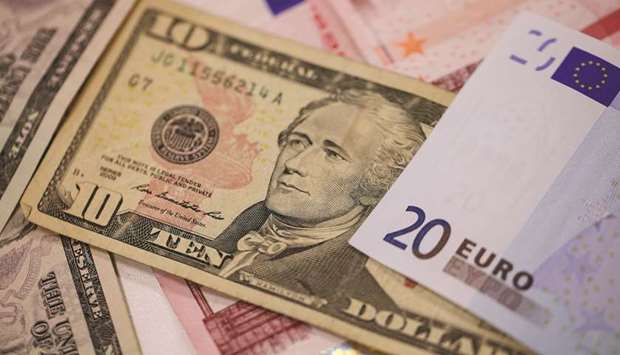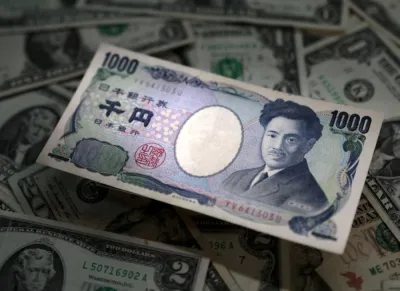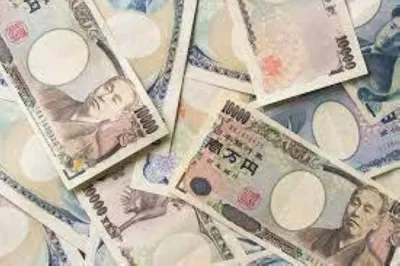Should European countries want the euro to replace the dollar as the world’s dominant reserve currency, the Sino-US trade war may offer a window of opportunity.
The souring of ties between the world’s two largest economies will indicate the extent to which China can switch some of its giant reserve holdings to another hard currency and also point to the limitations the eurozone faces in providing a viable alternative.
In the post-World War Two era, no asset has ever fully matched US government bonds for size, liquidity and credit quality.
It is the closest any global security has come to being perceived as a cash-like, risk-free asset with over $16tn worth of paper in circulation.
Yet, a year into a bitter tariff war, there are some signs of Beijing’s discomfort at being both the United States’ biggest trade adversary and one of its biggest creditors.
Recent data showed China sold more US Treasuries in March than it has in any month over the past 2-1/2 years.
If that proves to be more than a one-month quirk, speculation will rise about where it is diverting those reserves, and the eurozone — the world’s biggest trading bloc — tops the list of likely spots.
On size alone, eurozone government bonds appear to provide a credible landing pad: outstanding securities are almost two-thirds of the overall Treasury market.
There are signs already of greater Chinese interest in Europe — bankers attribute record Asian demand for recent Spanish, French and Belgian debt sales to Beijing.
And China has stepped up buying debt from Europe’s quasi-sovereign entities, bankers told Reuters, in particular the European Stability Mechanism (ESM) a eurozone-guaranteed AAA/A1-rated bailout fund.
Asian investors snapped up 33% of the ESM’s recent 2bn-euro 10-year bond, data from International Financing Review shows.
Asian takeup for ESM’s euro issues last year was 4%-5%. But for Chinese reserve managers to shift hundreds of billions of dollars from Treasuries to Europe’s single currency, the euro bloc needs to address key shortcomings.
“I find it hard to square the circle how such a huge Treasury holding can be diversified away, given the landscape we are in,” said Salman Ahmed, chief investment strategist at Lombard Odier Investment Managers.
“In the eurozone there is not a big risk-free market...Twenty years down the line it may be different.”
For Ahmed, the main issue is that credit risk in the bloc is not uniform.
The 19 members each run their own fiscal policies, budget rules are too loosely policed to ensure adherence, and euro exit remains a theoretical possibility.
So wealthier members such as Germany remain net savers that run balanced budgets or even surpluses, while others, mostly in southern Europe, are dogged by high debt.
The resulting mix of credit and political risks make it harder to see the aggregate eurozone bond market as a true mirror of the US Treasury universe.
Ross Hutchison, a fund manager at Aberdeen Standard Investments, says it boils down to the fact the United States “has a federal nature that the euro area hasn’t got yet”. Additionally, distortions stemming from years of bond buying stimulus by the European Central Bank mean available euro government bonds are far fewer than may appear.
While euro government debt outstanding is around $9.5tn, the ECB is estimated to hold roughly a quarter.
And the kind of “safe” securities that reserve managers seek are even scarcer — AAA-rated debt from Germany, the Netherlands and Luxembourg totals around $2.5tn, less if ECB holdings are discounted.
Debt from slightly lower-rated France, Belgium and Austria would add another $3tn.
Italy on the other hand has the bloc’s biggest government bond market, worth $2.3tn.
But its poor debt-to-GDP ratio, sluggish economy and populist policies make its bonds riskier and its credit rating is a notch or two above junk.
So in times of stress, investors clamour for German bonds, while in Italy, yields spike, threatening to undermine local banks that hold these securities.
Italian 10-year yields are at 2.5%, versus Germany’s minus 0.22%. Such risks have chipped away at the euro’s fortunes as a reserve currency — International Monetary Fund data shows it comprises 20% of global central bank holdings, from 26% in 2009.
The decline is linked to the 2011 Greek debt crisis that then ravaged Spain, Italy, Portugal and Ireland, highlighting risks of default by a member state and redenomination of euro debt into a new currency.
European officials are keen to counter the dollar’s hegemony, and at a conference last month they debated ways to win the euro a “stronger international role”. But they made no mention of the one measure that could resolve the issue at a stroke — joint debt issuance via common eurozone bonds.
Such securities would pool the bloc’s risks, and offer safer securities than those from most individual nations.
Olli Rehn, Bank of Finland governor and an ECB governing council member, said last week a safe asset would help enhance the euro’s international role, offering hope the issue will be on the agenda of the new European Commission later this year.
A common bond “would be more significant than the creation of another TLTRO in boosting demand for euros globally and reserve managers would be part of that story,” said David Owen, chief European economist at Jefferies.
He was referring to the ECB’s cheap multi-year loans.
“Maybe there will be more focus on pushing forward this agenda and taking advantage of the US and China having this trade spat,” Owen added.
Others, however, note that wealthier states oppose any common bond programme, fearing they will end up footing the bill.
Also, across Europe populist and anti-establishment movements are on the rise, with the agenda of slowing integration and returning power to national capitals.
Such groups grabbed a greater share of the vote in EU parliamentary elections last month, albeit less than expected.
“If anything, the trend is towards decentralisation of power,” Ahmed said.

A US ten dollar bills sits among ten and twenty euro banknotes in this arranged photograph taken inside a Travelex store, operated by Travelex Holdings Ltd., in London, UK.


